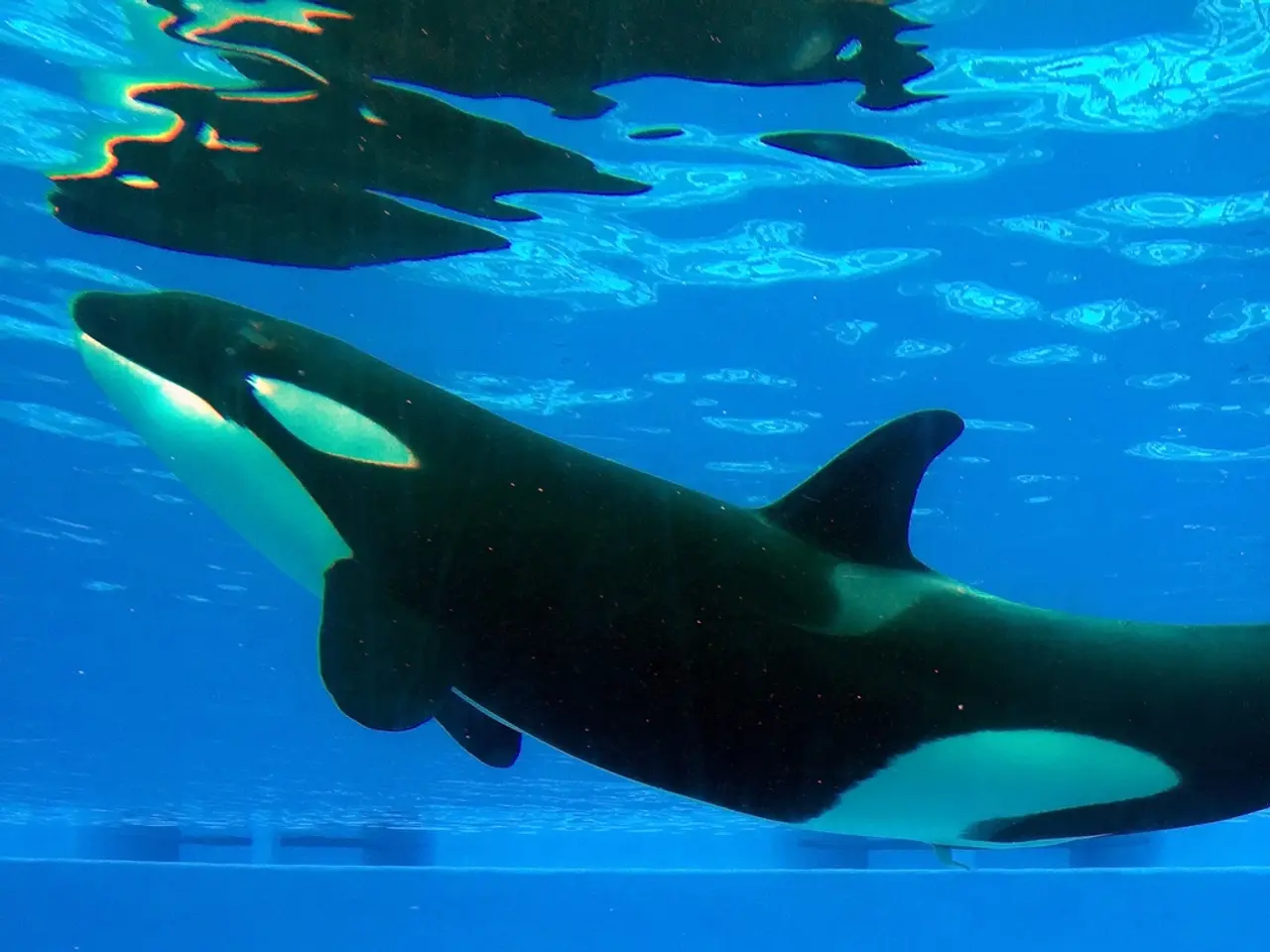Dead whale body of a baleen species retrieved near Tanjong Pagar, Singapore; scientists at the local museum initiate examination.
In the heart of Singapore, the Lee Kong Chian Natural History Museum has taken on an unusual and fascinating study - the dissection of a baleen whale carcass, marking a decade since the museum last examined a whale carcass, the sperm whale "Jubi Lee" in 2015.
The recent discovery of the whale carcass was made on September 12, with the National Parks Board alerting the museum to the find on September 6. The specimen, identified as a rorqual of the Balaenoptera genus, was incomplete and in an advanced stage of decomposition, making the cause of death uncertain. However, tissue samples have been collected for genetic testing, and findings from the dissection will be released at a later date.
The retrieved whale measured approximately 6.3 meters in length and weighed an estimated six tonnes. The museum, along with Singapore Salvage Engineers, secured and retrieved the whale remains over two days.
Each stranding of a whale in Singapore waters offers a unique opportunity to study these large marine mammals, according to Dr Marcus Chua, the museum's curator of mammalia. Whale strandings are exceedingly uncommon in Singapore, with the last major record dating back to a 13.4m blue whale found stranded near Melaka in 1892.
Baleen whales belong to around 14 to 16 recognized species, which include right whales, rorquals, the grey whale, and the pygmy right whale. These marine mammals are known for their unique feeding method, using baleen plates in their mouths to filter plankton and small fish.
Interestingly, all cetaceans, including baleen whales, are now known to be closely related to even-toed ungulates such as hippos. Baleen whales diverged from toothed whales about 34 million years ago.
The Lee Kong Chian Natural History Museum, located at the National University of Singapore, remains the country's only natural history museum. Its extensive collections and research in the areas of taxonomy, biodiversity, and natural conservation make it a leading natural history institution in Singapore.
If you're interested in learning more about previous studies or local findings related to whale strandings in Singapore, we recommend reaching out directly to the Lee Kong Chian Natural History Museum or local environmental authorities in Singapore. They may be able to provide more detailed information.






